MYSTERY PHOTO: Two domes
We go from last week’s mystery of one gold dome to this week’s photo of two brick-colored domes. Where is this building and what is it? Send your guess to editor@charlestoncurrents.com with “Mystery Photo” in the subject line. Please make sure to include your name and contact information.
Last issue’s mystery
 The April 9 Mystery Photo showed the gold top of the Georgia state capitol in Atlanta. While we got some guesses of buildings in West Virginia and Savannah, hats off to those who correctly identified the dome: Bud Ferillo of Columbia; Chris Brooks of Mount Pleasant; David Brown of Daniel Island; Cheryl Smithem of Summerville; Montez Martin of Charleston; Chuck Boyd of Hanahan; George Graf of Palmyra, Va.; and Tom Tindall of Edisto Island.
The April 9 Mystery Photo showed the gold top of the Georgia state capitol in Atlanta. While we got some guesses of buildings in West Virginia and Savannah, hats off to those who correctly identified the dome: Bud Ferillo of Columbia; Chris Brooks of Mount Pleasant; David Brown of Daniel Island; Cheryl Smithem of Summerville; Montez Martin of Charleston; Chuck Boyd of Hanahan; George Graf of Palmyra, Va.; and Tom Tindall of Edisto Island.
Tindall, using Wikipedia and Georgia.gov as sources, noted, “The gold dome in itself is quite impressive. However, sitting on top of the Capitol is a white-stoned statue of a woman raising a torch to the sky and pointing a sword to the ground. Known as Miss Freedom, originally christened as Goddess of Liberty, the statue has adorned the dome of the Georgia State Capitol since 1889. Commissioned in 1888, the hollow copper statue is painted white, is 22 feet tall from head to foot, with the total height from her torch to her feet being just over 26 feet and weighs over 1,600 pounds.”
Graf provided more detail: “According to a great story by Allison Hutton at saportareport.com the need for gold for the capitol dome was answered by the Dahlonega Jaycees in 1957. … The Dahlonega Jaycees took charge. They organized a day for Dahlonegans and others from Lumpkin County to return to their roots and pan for the gold themselves in local streams; they also sought donations from those who still had pieces from decades earlier.
“The pioneering spirit was at work, too, when it came time to deliver the 43 ounces of gold the Jaycees had collected to Atlanta. The gold would make the trip via wagon train, just as the Georgia treasury had in 1807 when the capital moved from Louisville to Milledgeville. On August 4, 1958, seven covered wagons accompanied by ‘33 adults, 18 children, 15 mules, six horses, one dog, and two State Patrol cars’ began the three-day journey from Dahlonega to Atlanta. The gold was proudly conveyed in a chest said to have belonged to William Few, one of the two Georgians (the other was Abraham Baldwin) who had signed the U.S. Constitution. The wagon train traveled just three miles per hour.”
- Send us a mystery: If you have a photo that you believe will stump readers, send it along (but make sure to tell us what it is because it may stump us too!) Send it along to editor@charlestoncurrents.com.
MYSTERY PHOTO: Two domes
FOCUS: Local company is pushing the recycling of old mattresses
COMMENTARY, Brack: If you want prosperity, you’ve got to invest to build talent
IN THE SPOTLIGHT: SCIWAY
NEW FEATURE: What we love about Charleston
GOOD NEWS: From a new police chief to ban on plastic bags
FEEDBACK: Yep, extending I-526 is questionable
S.C. ENCYCLOPEDIA: Yellow jessamine, the state flower
CALENDAR, April 16+: Charleston Farmers Market is back in business
FOCUSFOCUS: Local company is pushing the recycling of old mattresses
By Liz Rennie, special to Charleston Currents | In an era of excessive textile waste, one local company is hoping to push the larger corporate players towards better environmental stewardship.
BedShred.com, an initiative of The Charleston Mattress, is committed to keeping old mattresses out of landfills through aggressive recycling techniques. Every discarded mattress is deconstructed and recycled into foam fibers for carpet padding, wooden mulch for community garden projects and the steel coils are melted down for re-sell. The components are never used in bedding again, but can take on new life in other household forms.
The process leaves only 10 percent of each mattress being discarded as compacted waste. The effort is in collaboration with Nine Lives Recycling in Pamplico, S.C., where the mattresses are stored and materials processed on a 12-acre former agriculture farm. This happens year-round, and often gains more attention in the spring, when World Earth Day (April 21) highlights projects that are both eco-friendly and smart for the consumer.
In addition to creating more manual labor jobs, this process also makes the landfills safer. Mattresses are a large and costly problem for landfills. Because many national retailers are now only offering one-sided mattresses and directing consumers to replace them more often, landfills are seeing an influx of mattresses. The compaction rate of a discarded mattress is 400 percent less than regular garbage. A cubic yard of compacted garbage typically weighs between 1,500 pounds and 1,800 pound. A cubic yard of compacted mattresses weighs about pounds and can leave voids in the ground.
Recycling mattresses is a tedious and arduous process, and there have been numerous failed attempts. BedShred is taking the lead on this in South Carolina, and is excited about repurposing these materials instead of adding unnecessary waste to the environment. BedShred is always learning and making new connections for other uses for their components.
“We’re trying to push the industry in the right direction. Not because it’s more profitable, but because it’s the right thing to do,” says owner K.C. Rennie. “And if we can blaze the trail and figure out ways to make it more cost effective for other retailers to follow, then we’re happy to take the lead.”
The Charleston Mattress is in a unique position to propel this concept. With a dedicated small and agile crew, the family-owned and operated company located in Park Circle, knows that without the natural beauty and allure of Charleston, there wouldn’t be nearly as much business. Many of the visitors who come to stay with family who live here or sleep in the finer hotels and bed and breakfasts around the Holy City often sleep on mattresses made right in our backyard.
The Charleston Mattress regularly fields calls from far-flung places like New York, Florida, California and Pennsylvania from visitors who’ve slept on a Charleston Mattress and now want one shipped to their home state. Whereas delivery, set-up, haul-away and responsible disposal are all free for customers in Berkeley, Charleston and Dorchester counties, shipping outside of the Lowcountry is not free. However, plenty of clients still opt to pay the cost of getting a Charleston Mattress in their home.
As the BedShred initiative continues to gain traction, consumers are taking notice. It’s a development that the owners hope will keep landfills emptier of space-hogging mattresses.
Liz Rennie is an owner of the Charleston Mattress Store in North Charleston.
- Have a comment? Send to: editor@charlestoncurrents.com
BRACK: If you want prosperity, you’ve got to invest to build talent
By Andy Brack, editor and publisher | By Andy Brack, editor and publisher | If you’re a little overweight, you know – in your heart of hearts – what you really need to do: Eat less, get rid of junk food and exercise more.
 For states like South Carolina that are underweight in terms of education, economic disparity, health outcomes and poverty, we know – in our heart of hearts – what we really need to do: Invest more in our future, throw off the shackles that still hold us back and increase opportunities for our people.
For states like South Carolina that are underweight in terms of education, economic disparity, health outcomes and poverty, we know – in our heart of hearts – what we really need to do: Invest more in our future, throw off the shackles that still hold us back and increase opportunities for our people.
The new State of the South report by MDC reiterates what the nonprofit has concluded for years: that the South has come a long way, but still has a long way to go.
“Though educational attainment beyond high school has increased, and median income has grown, there are still staggering disparities across racial lines, and children born into low-income households have little chance of doing better than their parents,” the report says.
It highlights how Southern states need to take our medicine and adopt and maintain a regimen of using existing resources in smarter ways and finding more resources to do more.
“We have substituted a culture of investment for a culture of withdrawal,” the report asserted. “Today, we see the re-segregation of schools and the persistence of racial disparities in housing and employment, some enabled by state and federal legislation, some perpetuated by structural inequities that laws didn’t remove or relieve. The social and economic consequences of these inequities affect generations of families, particularly communities of color, and families across the region are less financially secure.”
Progress – and money – have come to the South. But they’ve come to pockets of excellence, not regionally. Lots of communities aren’t thriving. Some places are actually moving backward, the report warns.
One of the report’s more interesting conclusions involves the South’s phenomenal growth over the last 50 years. Some54 million more residents live in the South now, compared to five decades ago. Since 1970, the South has had half of the nation’s population growth. Simply put, a lot of new Southerners came from somewhere else. And as they moved here, they brought their college degrees and expertise – the result of past public investments by other states. In other words, the South benefitted as an “importer of talent.”
But is the model of relying on others to invest so that we can benefit sustainable? The report suggests it’s time for us to make more and better investments in Southern talent so we can reap future benefits.
“State and local efforts are not forward-looking enough to anticipate and adapt in ways to take advantage of new opportunities,” the MDC report says. “The public schools continue to educate eight out of 10 Southern young people. As states have expanded school choices, a decade of budgetary austerity has left most states with a lower relative level of public investment in public schools and higher education than before the Great Recession.”
The State of the South report suggests that a way forward for the region is to invest in generating more Southern talent. Without more talent here or throughout the nation, we won’t compete in the global marketplace.
“Local public schools, community colleges, and universities can be a cornerstone of educational opportunity in a community, but the pattern of increasing divestment in public institutions could affect long-term upward economic mobility prospects in the region,” the report notes.
“The very people who have been historically devalued in in our education and employment systems will soon make up a significant portion of our workforce. Shifting demographics demand that we ensure a strong, coherent alignment between the economic and civic institutions and equity all along the pathway from education to career.”
South Carolina has an obvious choice on education and future prosperity. It can continue to underfund education, live in a dream world that less money will propel us out of the education cellar and stop hard-to-stomach headlines about how the state has taken over another failing school district or how Mississippi jumped past South Carolina on education test scores.
Or the Palmetto State can commit to additional, real investments along the education spectrum to bolster talent that drives the economy.
Investing is a long-haul proposition. Failing to do more is to fail the people of South Carolina.
- Have a comment? Send to: editor@charlestoncurrents.com
SPOTLIGHT: SCIWAY
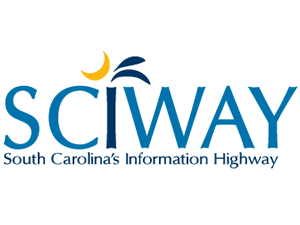 The public spiritedness of our underwriters allows us to bring Charleston Currents to you at no cost. Today we shine our spotlight on SCIWAY. Pronounced “sky-way,” SCIWAY is South Carolina’s Information Superhighway — the largest and most comprehensive directory of South Carolina information on the Internet. It includes thousands of links to other South Carolina Web sites, including Charleston Currents, as well as an amazing collection of maps, charts, articles, photos and other resources.
The public spiritedness of our underwriters allows us to bring Charleston Currents to you at no cost. Today we shine our spotlight on SCIWAY. Pronounced “sky-way,” SCIWAY is South Carolina’s Information Superhighway — the largest and most comprehensive directory of South Carolina information on the Internet. It includes thousands of links to other South Carolina Web sites, including Charleston Currents, as well as an amazing collection of maps, charts, articles, photos and other resources.
- To learn more about this extraordinary information hub that 7 million people visit a year, go to: http://www.SCIWAY.com.
NEW FEATURE: What we love about Charleston
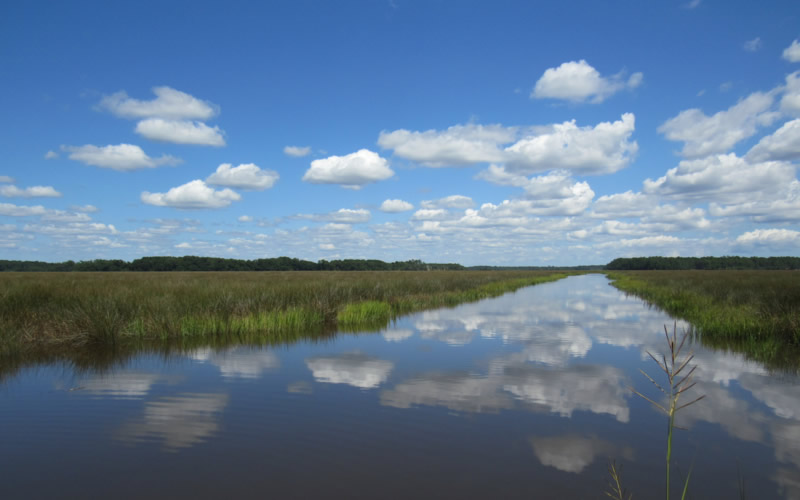
We love just about everything about the Lowcountry’s marshes. What do you love about the area? (Copyrighted photo by Andy Brack.)
We started Charleston Currents a decade ago because the area was missing something – a focus on good news, the kind of information that consistently celebrates the rich and good quality of life in the Lowcountry.
![]() It’s easy for traditional media to write blaring headlines and loud promos about bad stuff that plagues more and more communities – traffic, crime, education, conflict. It’s not tough to collect and publish news stories with negativity. All you have to do is show up at official sources to read through police and court reports.
It’s easy for traditional media to write blaring headlines and loud promos about bad stuff that plagues more and more communities – traffic, crime, education, conflict. It’s not tough to collect and publish news stories with negativity. All you have to do is show up at official sources to read through police and court reports.
While bad news might drive eyeballs to TV screens and newspapers, bad news isn’t what keeps people living here and attracts them in droves to visit and relocate. People move here because they love lots of various things – from the beaches, marshes and special places to the warmth of people, food, lifestyle and more.
So in the spirit of connecting us with what we love about the area, we’d like you to send in short comments – 50 words to 100 words – to describe something you really enjoy about the Lowcountry. It can be big or small. It can be a place where you get a great morning biscuit to a business or government entity doing a good job.
We’ll highlight one entry a week in Charleston Currents. We look forward to hearing from you. Enter as many times as you like (but don’t deluge us with a dozen entries at one time!)
— By Andy Brack, editor and publisher
GOOD NEWSGOOD NEWS: From a new chief to a ban on plastic bags

The Charleston Symphony Orchestra, the Nashville Ballet and the Charleston Symphony Chorus singers will perform Carl Orff’s Carmina Burana on Thursday and Friday at the Charleston Gaillard Center. (Photo provided by Charleston Gaillard Center.)
There’s lots in our Good News section this week:
New chief. Charleston Mayor John Tecklenburg, Chief Municipal Judge Joseph S. Mendelsohn and city council members will meet noon April 16 for the swearing in ceremony of the department’s new police chief, Luther T. Reynolds. Welcome, chief!
“Unforgettable.” Tickets are still available for Carl Orff’s splendid scenic cantata, “Carmina Burana,” which will be performed 7:30 p.m. April 20 and 21 at the Charleston Gaillard Center by the Nashville Ballet and Charleston Symphony Orchestra. The performance will include 150 Charleston Symphony Chorus singers, more than five dozen musicians and 28 ballet dancers. You won’t want to miss it. A special opening performance will be by Ballet Evolution. More info and how to buy tickets.
Scholarships. The Charleston Metro Chamber of Commerce is awarding 25 high school students with Accelerate Greater Charleston 2 scholarships to Trident Technical College. The students will be accepting their scholarships on April 17 at the chamber office. Through this scholarship, along with other programs like Career Academies, the Chamber is preparing local students with the skills they need to be hired in the region’s highest demand jobs. The scholarship provides $1,000 per semester (or $2000 per year) to Trident Technical College for up to two years to obtain a degree in one of our region’s high-demand career sectors.
Rainout. Sunday’s series finale between the RiverDogs and Intimidators was cancelled due to inclement weather. As it was the final game between the Yankees and White Sox farm clubs in the first-half, it will not be made up. Fans with tickets to Sundays game can redeem them for any other home game at The Joe this season, subject to availability and excluding July 4. The RiverDogs continue their Opening Week stint at Riley Park on Monday night, next taking on the West Virginia Power, the Class A affiliate of the Pittsburgh Pirates, to start a three-game tilt. Monday’s broadcast is available on WTMA 1250AM in the tri-county area and online via streaming audio at riverdogs.com, the RiverDogs TuneIn radio app, and on MiLB.tv. First pitch is at 7:05 p.m.
Free skin checks. Dermatologists and certified dermatological providers from Dermatology and Laser Center of Charleston will offer free skin cancer screenings for new patients on May 1 and 15. The screenings will take place at the offices of Dermatology and Laser Center of Charleston 5 p.m. to 7:30 p.m. May 1 at 2180 Henry Tecklenburg Drive, West Ashley (behind Lowe’s), and at the same time May 15 at 1364 Ashley River Road, West Ashley. Registration for the event is required and may be made by phoning 843-556-8886, visiting their website www.dermandlaser.com.
Magnolia’s new children’s garden. Magnolia Plantation and Gardens will start work April 19 to create a new children’s garden, a place where young minds can explore the outdoors and learn the value of protecting the environment. A corps of Magnolia volunteers and master gardeners from Clemson University’s Extension Service will plant 100 specially-bred hydrangeas in the new garden that will evolve into a 20-acre youth complex with a campground and butterfly garden. Developed by Bailey Nurseries, based in Newport, Minn., the hydrangea will bloom from spring to fall. Magnolia, America’s oldest garden, is the only South Carolina garden that is being gifted with these plants, according to a press release.
Hats off to Mount Pleasant. The Town of Mount Pleasant made history last week by becoming the largest town in the state to address plastic pollution by approving what is considering the most comprehensive single-use plastics ordinance in state history, according to the S.C. Coastal Conservation League. “This is incredible news, and we share the excitement of residents and local leaders,” said Laura Cantral, the organization’s new leader. “A ban on single-use plastic bags, straws, and Styrofoam will curb plastic pollution and protect places like Shem Creek and the Charleston Harbor.”
- Have a comment? Send to: editor@charlestoncurrents.com
FEEDBACK: Yep, extending I-526 is questionable
Fred Palm is right on target with his column about Charleston County Council’s dogged insistence on building this highly questionable, highly expensive, poorly planned roadway extension.
Instead of bankrupting our options, the county should be putting its energy and resources to a host of critical issues, as Mr. Palm points out, the most pressing of which is the widespread and repetitive flooding of our homes and neighborhoods.
We need common sense, not stubborn politics.
— Susan Lyons, Charleston, S.C.
Send us your thoughts. We love hearing from readers. Comments are limited to 250 words or less. Please include your name and contact information. Send your letters to: editor@charlestoncurrents.com| Our feedback policy.
S.C. ENCYCLOPEDIAHISTORY: Yellow jessamine, the state flower
S.C. Encyclopedia | The yellow, or Carolina, jessamine (Gelsemium sempervirens) was chosen as state flower by the General Assembly in 1924. In 1923 the legislature appointed a commission to select a floral emblem. Senator Thomas B. Butler and Representatives George B. Ellison and Thomas Savage Heyward recommended the yellow jessamine to the senate and house on February 1, 1924, and it was promptly adopted by both chambers.
The legislators observed that the jessamine was “the unanimous selection of . . . the great majority of the ladies of the State who expressed a preference.” Four specific reasons were given for the designation: “(1) It is indigenous to every nook and corner of the State. (2) It is the first premonitor of coming spring. (3) Its fragrance greets us first in the woodland and its delicate flower suggests the pureness of gold. (4) Its perpetual return out of the dead winter suggests the lesson of constancy in, loyalty to, and patriotism in the service of the State.”
The yellow jessamine is a twining woody vine with pointed, evergreen leaves. It climbs over bushes, fences, and even tree limbs. Five-petaled, star-shaped yellow flowers bloom from February or March through early May, and the capsule-like fruit matures from September to November. It is common in the South Carolina Piedmont and Sandhills and in the coastal plain from Virginia to Florida, as well as west to Texas and Arkansas. All parts of the plant are poisonous, and even touching it can cause dermatitis. The drug gelsemium was formerly made from the plant and dispensed for the treatment of malaria, but overdoses could be fatal and it is no longer used. Sprigs of jessamine are etched on the steel blade of the Sword of State used by the South Carolina Senate.
— Excerpted from an entry by David C.R. Heisser. To read more about this or 2,000 other entries about South Carolina, check out The South Carolina Encyclopedia, published in 2006 by USC Press. (Information used by permission.)
ON THE CALENDARCALENDAR, April 16+: Charleston Farmers Market is back in business
Staff reports | Now that spring has sprung, so too is it time for more farmers markets around the Lowcountry.
The area’s largest, the Charleston Farmers Market, is back in action from 8 a.m. to 2 p.m. every Saturday through Nov. 24 at Marion Square. A holiday market will be open Dec. 1, 2, 8. 9, 15 and 16.
The downtown market and its West Ashley sister in Ackerman Park, which reopens April 25, are dedicated to the support and advocacy of Lowcountry farmers, growers, prepared/packaged food, artisans, crafters, live performers and community groups of all kinds.
The Saturday market offers a variety of local produce, plants, herbs and cut flowers as well as breakfast and lunch vendors, live entertainment and an assortment of juried arts and crafts from local artisans. Attracting locals and tourists alike, the CFM is the community connection, bringing together people from all parts of the Lowcountry and beyond. Whether you are a local that frequents the CFM or a tourist visiting for the weekend, we have something for you to enjoy. We greatly appreciate your love & support and we look forward to seeing you in Marion Square at the Charleston Farmers Market!
Other farmers markets in the area
SATURDAYS: Johns Island Farmers Market operates each Saturday from 10 a.m. to 1 p.m. year-round with more than 50 local farmers and vendors, food trucks, music and more. The market is located on the campus of Charleston Collegiate School, 2024 Academy Road, Johns Island.
SATURDAYS: The Town Market on James Island are again open. Open 9 a.m. to 1 p.m. every Saturday at the James Island Youth Soccer Club, 871 Fort Johnson Road, James Island.
TUESDAYS: The Town of Mount Pleasant’s Farmers Market is every Tuesday from 3:30 p.m. to 7 p.m. in the market pavilion at Moultrie Middle School, 645 Coleman Blvd, in Mount Pleasant.
Also on the Calendar:
![]() Wine Down Wednesdays: 5:30 p.m. to 7:30 p.m., on April 18 and May 2, Old Towne Creek County Park, West Ashley. While this new county park is not yet open daily to the public, these Wednesday opportunities offer Lowcountry residents the chance to experience the beauty of this property. Tickets needed. More: CharlestonCountyParks.com/WDW.
Wine Down Wednesdays: 5:30 p.m. to 7:30 p.m., on April 18 and May 2, Old Towne Creek County Park, West Ashley. While this new county park is not yet open daily to the public, these Wednesday opportunities offer Lowcountry residents the chance to experience the beauty of this property. Tickets needed. More: CharlestonCountyParks.com/WDW.
Charleston Outdoor Festival: 9 a.m. to 4 p.m., April 20 and 21, James Island County Park. The weekend festival includes a multitude of outdoor recreation activities like mountain biking, slack lining, archery, climbing, and disc golf, open to all ages. It also features the East Coast Canoe and Kayak Symposium, one of the country’s premier showcases of canoeing, kayaking and stand up paddleboarding. Try out equipment, compete in tournaments and other hands-on activities, and learn everything from the basics to expert skills in each sport. Park admission starts at $2 per person. To try activities, get the Try It pass for $10. Or, register for the symposium for classes, demos and much more. For a full event schedule, visit charlestoncountyparks.com or call 843-795-4386.
(NEW) Free shredding. Charleston County’s Environmental Management Department (CCEM) is celebrating Earth Day by hosting four free shred events located throughout the county. The shred events will be held from 9 a.m. to noon on April 21. CCEM will accept confidential documents for free on-site shredding and recycling from residents of Charleston County; no commercial business material will be accepted. Free shredding locations are at Citadel Mall (JC Penney’s Parking Lot), 2070 Sam Rittenberg Blvd, Charleston; Mount Pleasant DMV, 1189 Sweetgrass Basket Pkwy, Mount Pleasant; Northwoods Mall (Dillard’s Parking Lot), 2150 Northwoods Blvd, North Charleston; and Signal Point Road Convenience Center, 1716 Signal Point Rd, Charleston 29412.
Antique tractor show and pull: 1 p.m., April 21, 5146 Highway 174, Adams Run. Gates will open at 9 a.m. as people flock to see more than 50 fully restored farm tractors from the 1930s, 1940s and 1950s on display along with vintage automobiles. Food vendors and games for children make the event fun for the whole family. Tractor-pulling contest begins at 1 p.m. Admission is $5 for adults; children under 12 are free. No pets; no alcohol. More information, contact, Pete Laurie, 843-822-2057.
(NEW) Spring Jazz Jam: 4 p.m. to 8 p.m., April 22, Republic Garden and Lounge, 462 King Street, Charleston. The Charleston Jazz Club (CJC) is participating in National Jazz Appreciation Month and Skipp Pearson’s International Jazz Week in South Carolina, along with Coastal Carolina University, Gold Key Jazz Society of South Carolina and the United Nations Educational Scientific and Cultural Organization (UNESCO). More.
(NEW) GoodSpring fund-raiser: 6 p.m. to 9 p.m. April 30, Mira Winery, 68½ Queen St., Charleston. CharlestonGOOD is holding a spring fundraiser to be able to develop a new summer project as it continues to host collaborative gatherings. This event will include live music, art, food from Butcher & Bee and wine rom Mira. Tickets are $50. More: CharlestonGOOD.com
Early morning bird walks at Caw Caw: 8:30 a.m. every Wednesday and Saturday, Caw Caw Interpretive Center, Ravenel. You can learn about habitats and birds, butterflies and other organisms in this two-hour session. Registration not required, but participants are to be 15 and up. $10 per person or free to Gold Pass holders. More: http://www.CharlestonCountyParks.com.
- If you have an event to list on our calendar, please send it to editor@charlestoncurrents.com for consideration. The calendar is updated weekly on Mondays.
OUR UNDERWRITERS
Charleston Currents is an underwriter-supported weekly online journal of good news about the Charleston area and Lowcountry of South Carolina.
- Meet our underwriters
- To learn more about how your organization or business can benefit, click here to contact us. Or give us a holler on the phone at: 843.670.3996.
OUR TEAM
Charleston Currents offers insightful community comment and good news on events each week. It cuts through the information clutter to offer the best of what’s happening locally.
- Mailing address: O. Box. 22261 | Charleston, SC 29413
- Phone: 670.3996
Charleston Currents is provided to you weekly by:
- Editor and publisher: Andy Brack, 843.670.3996
- Contributing photographer: Michael Kaynard
- Contributing editor, careers: Ben Fanning
- Contributing editor, common good, Fred Palm
- Contributing editor, money: Kyra Morris
- Contributing editor, Palmetto Poem: Marjory Wentworth
SUBSCRIBE FOR FREE
Subscriptions to Charleston Currents are free.
- Click here to subscribe.
- We don’t want to lose you as a reader of Charleston Currents, go to the bottom of any of your weekly newsletters and click the “unsubscribe” function. If that doesn’t work, please send us an email with the word “unsubscribe” in the subject line.
© 2008-2018, Statehouse Report, LLC. All rights reserved. Charleston Currents is published every Monday by Statehouse Report LLC, PO Box 22261, Charleston, SC 29413.



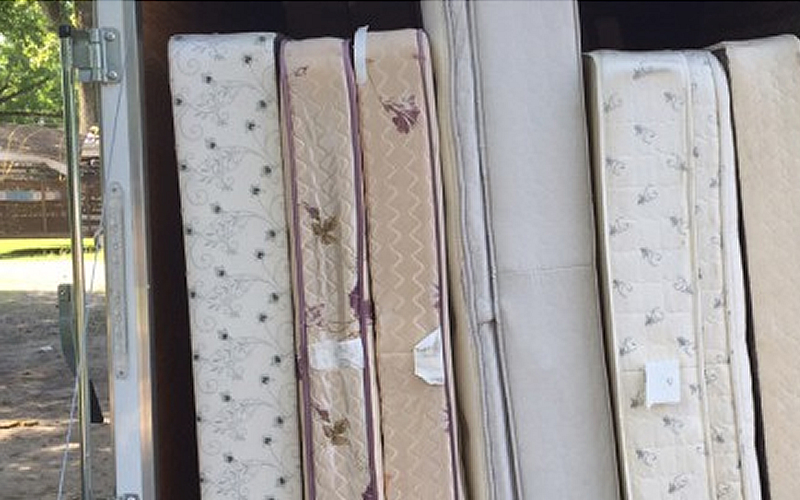


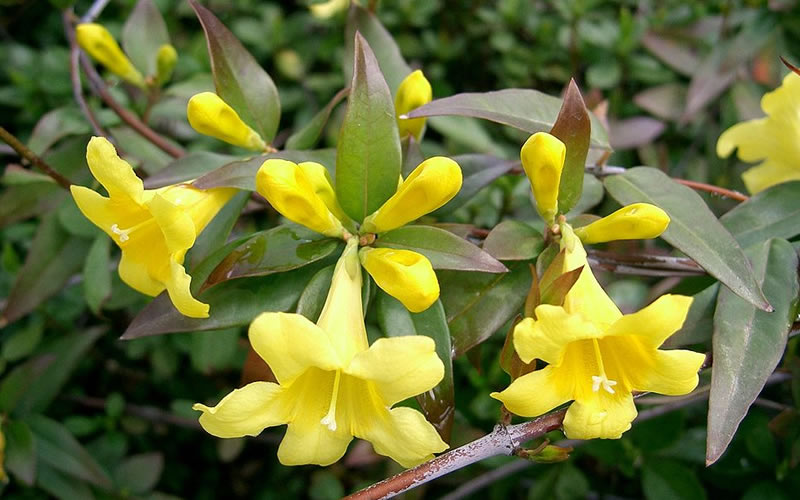
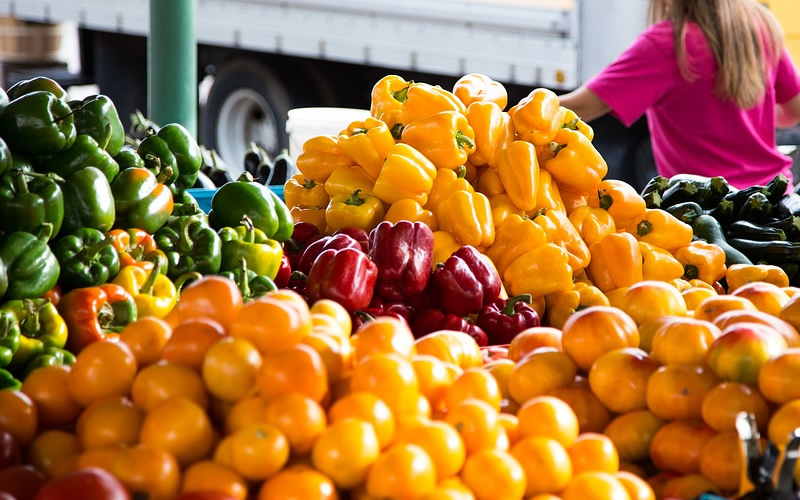

 We Can Do Better, South Carolina!
We Can Do Better, South Carolina!
























